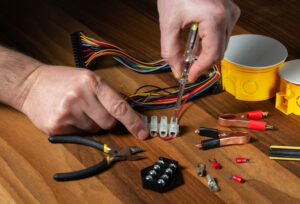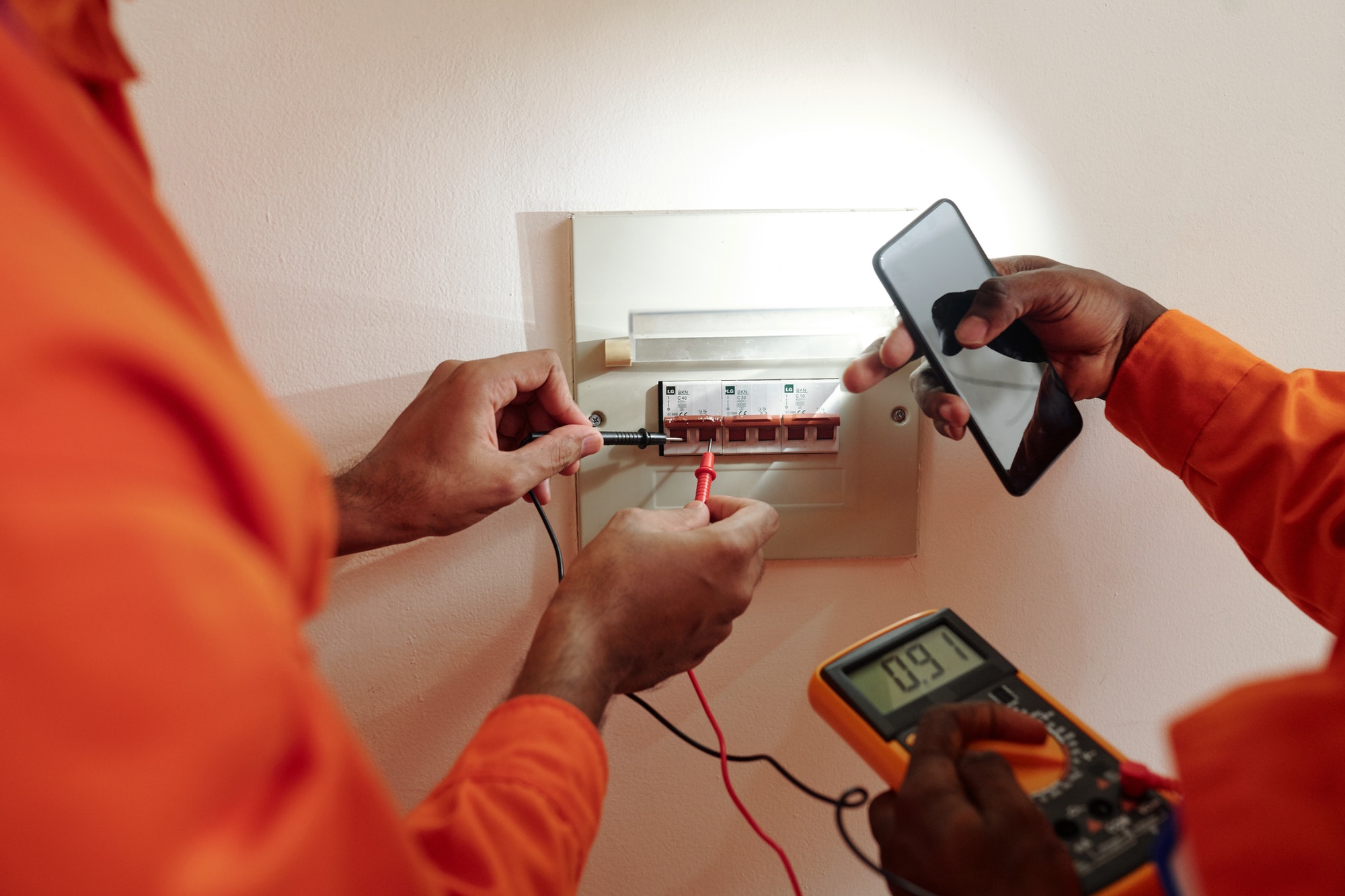Electrical emergencies can occur unexpectedly and pose significant risks to both property and personal safety. Understanding the common causes of these emergencies and knowing how to respond can help mitigate damage and prevent injuries. Here, we will explore some of the most frequent causes of electrical emergencies and the immediate solutions you should take.
Common Causes of Electrical Emergencies
- Short Circuits
- Cause: Short circuits occur when electrical currents travel along an unintended path with little or no electrical resistance. This can result from damaged wiring, faulty appliances, or compromised insulation.
- Solution: If you suspect a short circuit, immediately turn off the affected circuit at the breaker box. Do not attempt to touch or repair the fault without proper knowledge. Call a licensed electrician to inspect and fix the issue.
- Electrical Fires
- Cause: Electrical fires can result from overloaded circuits, faulty wiring, or malfunctioning appliances. These fires often start behind walls or in areas where they may not be immediately visible.
- Solution: If you notice smoke or fire, cut the power from the main circuit breaker, if safe to do so. Use a Class C fire extinguisher designed for electrical fires, never water. Evacuate the area and call emergency services immediately.
- Power Outages
- Cause: Power outages can be caused by severe weather, grid failures, or issues with the local utility provider.
- Solution: During a power outage, check if the outage is local to your home or affects a wider area. Turn off sensitive electronics to prevent damage from power surges when power is restored. Use flashlights instead of candles to avoid fire hazards and keep the refrigerator and freezer closed to preserve food.
- Electrical Shocks
- Cause: Electrical shocks can occur due to faulty appliances, exposed wires, or improper handling of electrical devices.
- Solution: If someone receives an electrical shock, do not touch them directly. Turn off the power source and use a non-conductive object to separate the person from the electrical source. Seek immediate medical attention.
- Overloaded Circuits
- Cause: Overloaded circuits occur when too many devices are connected to a single circuit, exceeding its capacity and causing overheating.
- Solution: Unplug some devices to reduce the load on the circuit. Avoid using extension cords or multiple plug adapters in a single outlet. If circuit breakers frequently trip, consult an electrician to assess and potentially upgrade your electrical system.
- Flickering or Dimming Lights
- Cause: Flickering or dimming lights can be caused by loose connections, overloaded circuits, or faulty wiring.
- Solution: Identify if the issue is isolated to one fixture or affects the entire home. If the problem is widespread, turn off the power and contact an electrician to investigate and repair the issue.
- Burning Smell or Sparks
- Cause: A burning smell or sparks from outlets or switches can indicate overheating, faulty wiring, or a short circuit.
- Solution: Immediately turn off the power at the breaker box. Do not use the affected outlet or switch until it has been inspected and repaired by a professional.
Immediate Solutions for Electrical Emergencies
- Turn Off Power
- The first step in most electrical emergencies is to turn off the power to the affected area or the entire home if necessary. This can prevent further damage and reduce the risk of injury.
- Evacuate and Call for Help
- In cases of electrical fires or severe shocks, evacuate the area immediately and call emergency services. Do not attempt to extinguish electrical fires with water.
- Use Appropriate Fire Extinguishers
- If you have a Class C fire extinguisher, use it to put out electrical fires. These extinguishers are specifically designed for electrical fires and do not conduct electricity.
- First Aid for Electrical Shocks
- If someone is shocked, after safely disconnecting the power source, provide first aid while waiting for medical help. Perform CPR if the person is not breathing or has no pulse.
- Avoid Water
- Never use water to extinguish an electrical fire or to deal with an electrical emergency in wet conditions. Water conducts electricity and can increase the risk of shock.
- Check for Damaged Wiring
- Regularly inspect your home for signs of damaged wiring, such as frayed cords, discolored outlets, or unusual sounds. Address these issues promptly to prevent emergencies.
- Regular Maintenance
- Schedule regular inspections and maintenance of your electrical system by a licensed electrician. This can identify potential issues before they become emergencies.
Conclusion
Understanding the common causes of electrical emergencies and knowing how to respond effectively can save lives and prevent property damage. Always prioritize safety by turning off power, evacuating when necessary, and calling professionals for help. Regular maintenance and proper use of electrical systems can also reduce the likelihood of emergencies. Being prepared and informed is the best defense against the dangers posed by electrical emergencies.






